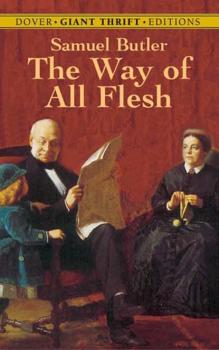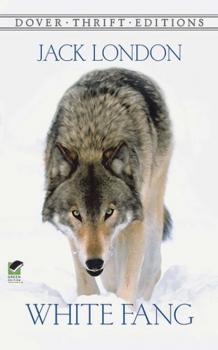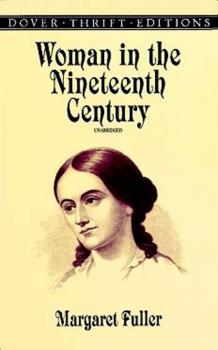MREADZ.COM - много разных книг на любой вкус
Скачивание или чтение онлайн электронных книг.The Way of All Flesh
Written between 1873 and 1884 and published posthumously in 1903, The Way of All Flesh is regarded by some as the first twentieth-century novel. Samuel Butler's autobiographical account of a harsh upbringing and troubled adulthood shines an iconoclastic light on the hypocrisy of a Victorian clerical family's domestic life. It also foreshadows the crumbling of nineteenth-century bourgeois ideals in the aftermath of the First World War, as well as the ways in which succeeding generations have questioned conventional values.Hailed by George Bernard Shaw as «one of the summits of human achievement,» this chronicle of the life and loves of Ernest Pontifex spans four generations, focusing chiefly on the relationship between Ernest and his father, Theobald. Written in the wake of Darwin's Origin of Species, it reflects the dawning consciousness of heredity and environment as determinants of character. Along the way, it offers a powerfully satirical indictment of Victorian England's major institutions—the family, the church, and the rigidly hierarchical class structure.
What's Wrong with the World
In the aptly titled treatise What's Wrong With the World, one of the twentieth century's most memorable and prolific writers takes on education, government, big business, feminism, and a host of other topics. A steadfast champion of the working man, family, and faith, Chesterton eloquently opposed materialism, snobbery, hypocrisy, and any adversary of freedom and simplicity in modern society.Culled from the thousands of essays he contributed to newspapers and periodicals over his lifetime, the critical works collected for this edition pulse with the author's unique brand of clever commentary. As readable and rewarding today as when they were written over a century ago, these pieces offer Chesterton's unparalleled analysis of contemporary ideals, his incisive critique of modern efficiency, and his humorous but heartfelt defense of the common man against trendsetting social assaults.
Women's Wit and Wisdom
"Blessed is the man who, having nothing to say, abstains from giving us wordy evidence of the fact," said Mary Ann Evans, a.k.a. George Eliot. «In nine cases out of ten, a woman had better show more affection than she feels,» opined Jane Austen. «When a girl marries, she exchanges the attentions of many men for the inattention of one,» observed Helen Rowland. These are just a few of more than 400 memorable quotes in this volume, expressed over the past 2,500 years by female poets, novelists, historical figures, celebrities, entertainers, and others.Covering a broad range of topics — men, women, love and romance, marriage, family, human nature, aging, the quest for gender equality, work and occupations, joy and sorrow, nature, the environment, and more — the quotations are divided into subject categories and arranged chronologically by the author's date of birth. Where possible, sources and dates are cited for each quote.Browse through these pages and immerse yourself in snippets of worldly wisdom from the poignant («The loneliest woman in the world is a woman without a close woman friend» — Toni Morrison) to the despairing («Old age is woman's hell» — Ninon de Lenclos) to the politically astute («Do not tell secrets to those whose faith and silence you have not already tested» — Queen Elizabeth I) to the humorous («Flops are a part of life's menu, and I've never been a girl to miss out on any of the courses» — Rosalind Russell).You'll also find food for thought from Sappho, Madame de Stael, Harriet Tubman, Margaret Sanger, Eleanor Roosevelt, Helen Keller, Erma Bombeck, Oprah Winfrey, Gloria Steinem, and Hillary Rodham Clinton, among others. Brimming with timeless observations, humor, and wisdom, this practical and entertaining little volume will be indispensable to public speakers and a delight to general readers.
A Vindication of the Rights of Woman
In an era of revolutions demanding greater liberties for mankind, Mary Wollstonecraft (1759–1797) was an ardent feminist who spoke eloquently for countless women of her time.Having witnessed firsthand the devastating results of male improvidence, she assumed an independent role early in life, educating herself and eventually earning a living as a governess, teacher and writer. She was also an esteemed member of the radical intellectual circle that included William Godwin (father of her daughter, novelist Mary Godwin Shelley, and later her husband), Thomas Paine, William Blake, Henry Fuseli and others.First published in 1792, A Vindication of the Rights of Woman created a scandal in its day, largely, perhaps, because of the unconventional lifestyle of its creator. Today, it is considered the first great manifesto of women’s rights, arguing passionately for the education of women: «Tyrants and sensualists are in the right when they endeavor to keep women in the dark, because the former want only slaves, and the later a plaything.»No narrow-minded zealot, Wollstonecraft balanced passionate advocacy with a sympathetic warmth — a characteristic that helped her ideas achieve widespread influence. Anyone interested in the history of the women’s rights movement will welcome this inexpensive edition of one of the landmark documents in the struggle for human dignity, freedom and equality.
Under Drake's Flag
G. A. Henty (1832–1903) wrote vastly popular, carefully researched books about fictional youngsters who lived during critical periods of history. In this exciting volume, he provides a thrilling glimpse of the struggle between Great Britain and Spain for supremacy of the high seas, as seen through the eyes of a sixteenth-century teenager, Ned Hearne.Along with three friends, young Ned is swept up in one adventure after another as he accompanies the daring English mariner Francis Drake on amazing voyages of discovery across the Pacific. An eyewitness to the great naval battle between the English fleet and the Spanish Armada, Ned has firsthand views of England's rise as the world's most powerful sea-going nation. A rousing, old-fashioned tale of ruthless life on the high seas, Under Drake's Flag introduces today's young readers to one of yesteryear's most widely read authors — a writer whose many talents earned him the title Prince of Storytellers.
World War One British Poets
Ironically, the horrors of World War One produced a splendid flowering of British verse as young poets, many of them combatants, confronted their own morality, the death of dear friends, the loss of innocence, the failure of civilization, and the madness of war itself.This volume contains a rich selection of poems from that time by Rupert Brooke, Wilfred Owen, Siegfried Sassoon, Isaac Rosenberg, and others known especially for their war poetry — as well as poems by such major poets as Robert Graves, Thomas Hardy, A. E. Housman, Robert Bridges, and Rudyard Kipling.Included among a wealth of memorable verses are Rupert Brooke's «The Soldier,» Wilfred Owen's «Anthem for Doomed Youth,» «In the Pink» by Siegfried Sassoon, «In Flanders Fields» by Lieut. Col. McCrae, Robert Bridges' «To the United States of America,» Thomas Hardy's «In Time of 'The Breaking of Nations,'» as well as works by Walter de la Mare, May Wedderburn Cannan, Ivor Gurney, Alice Meynell, and Edward Thomas.Moving and powerful, this carefully chosen collection offers today's readers an excellent overview of the brutal range of verse produced as poets responded to the carnage on the fields of Belgium and France.
White Fang
When White Fang was first published in 1906, Jack London was well on his way to becoming one of the most famous, popular, and highly paid writers in the world. White Fang stands out as one of his finest achievements, a spellbinding novel of life in the northern wilds.In gripping detail, London bares the savage realities of the battle for survival among all species in a harsh, unyielding environment. White Fang is part wolf, part dog, a ferocious and magnificent creature through whose experiences we see and feel essential rhythms and patterns of life in the animal kingdom and among mankind as well.It is, above all, a novel that keenly observes the extraordinary working of one of nature's greatest gifts to its creatures: the power to adapt. Focusing on this wondrous process, London created in White Fang a classic adventure story as fresh and appealing for today's audiences as for those who made him among the bestselling novelists of his day.
The Wonderful Adventures of Nils
Winner of the Nobel Prize for Literature in 1909 — the first woman to be so honored — Swedish novelist Selma Lagerlöf (1858–1940) was a gifted storyteller whose writings were often tinged with the supernatural and rooted in the sagas and legends of her homeland.She secured her reputation as a children's-book author with The Wonderful Adventures of Nils, long considered a masterpiece of children's literature. Written at the request of Swedish school authorities and first published in 1906, it is the enchanting and remarkably original tale of Nils Holgersson, a mischievous boy of 14 who is changed by an elf into a tiny being able to understand the speech of birds and animals.Brilliantly weaving fact and fiction into a breathtaking and beautiful fable, the story recounts Nils's adventures as he is transported over the countryside on the back of a goose. From this vantage point, Nils witnesses a host of events that provide young readers with an abundance of information about nature, geography, folklore, animal life, and more.Reset in easy-to-read type and enhanced with 10 new illustrations, this inexpensive, unabridged edition will bring new generations of readers under the magical spell of a timeless classic.
Woman in the Nineteenth Century
A woman of many gifts, Margaret Fuller (1810–1850) is most aptly remembered as America's first true feminist. In her brief yet fruitful life, she was variously author, editor, literary and social critic, journalist, poet, and revolutionary. She was also one of the few female members of the prestigious Transcendentalist movement, whose ranks included Ralph Waldo Emerson, Henry David Thoreau, Elizabeth Palmer Peabody, Nathaniel Hawthorne, and many other prominent New England intellectuals of the day. As co-editor of the transcendentalist journal, The Dial, Fuller was able to give voice to her groundbreaking social critique on woman's place in society, the genesis of the book that was later to become Woman in the Nineteenth Century. Published in 1843, this essay was entitled «The Great Lawsuit: Man versus Men, Woman versus Women.»First published in book form in 1845, Woman in the Nineteenth Century was correctly perceived as the controversial document that it was: receiving acclaim and achieving popular success in some quarters (the first printing sold out within a week), at the same time that it inspired vicious attacks from opponents of the embryonic women's movement. In this book, whose style is characterized by the trademark textual diversity of the transcendentalists, Fuller articulates values arising from her passionate belief in justice and equality for all humankind, with a particular focus on women. Although her notion of basic rights certainly includes those of an educational, economic, and legal nature, it is intellectual expansion and changes in the prevailing attitudes towards women (by men and women) that Fuller cherishes far above the superficial manifestations of liberation. A classic of feminist thought that helped bring about the Seneca Falls Women's Convention three years after its publication, Woman in the Nineteenth Century inspired her contemporaries Elizabeth Cady Stanton and Susan B. Anthony to speak of Fuller as possessing «more influence upon the thought of American women than any woman previous to her time.»
Wuthering Heights
Considered lurid and shocking by mid-19th-century standards, Wuthering Heights was initially thought to be such a publishing risk that its author, Emily Brontë, was asked to pay some of the publication costs. A somber tale of consuming passions and vengeance played out against the lonely moors of northern England, the book proved to be one of the most enduring classics of English literature.The turbulent and tempestuous love story of Cathy and Heathcliff spans two generations — from the time Heathcliff, a strange, coarse young boy, is brought to live on the Earnshaws' windswept estate, through Cathy's marriage to Edgar Linton and Heathcliff's plans for revenge, to Cathy's death years later and the eventual union of the surviving Earnshaw and Linton heirs.A masterpiece of imaginative fiction, Wuthering Heights (the author's only novel) remains as poignant and compelling today as it was when first published in 1847.









